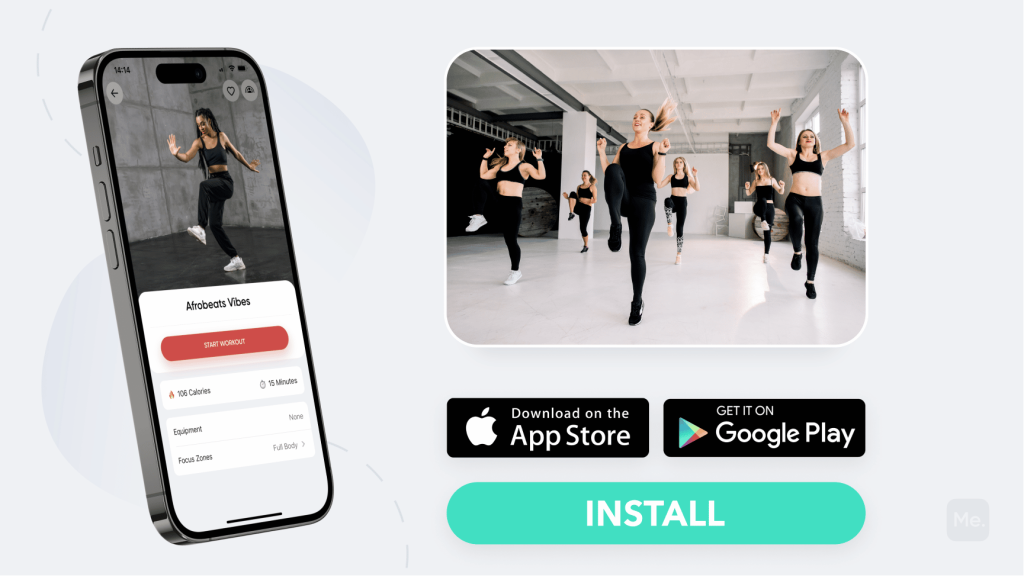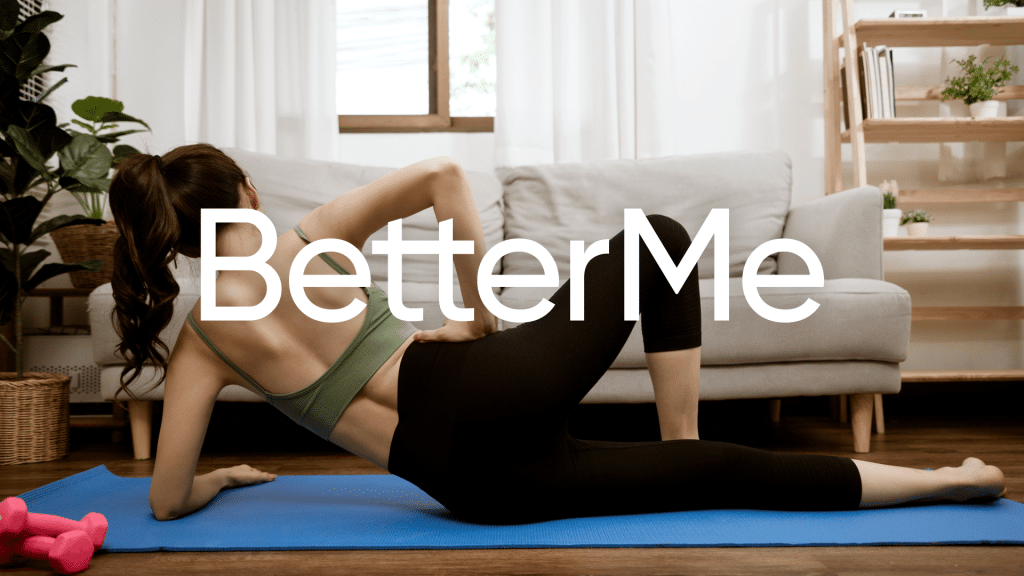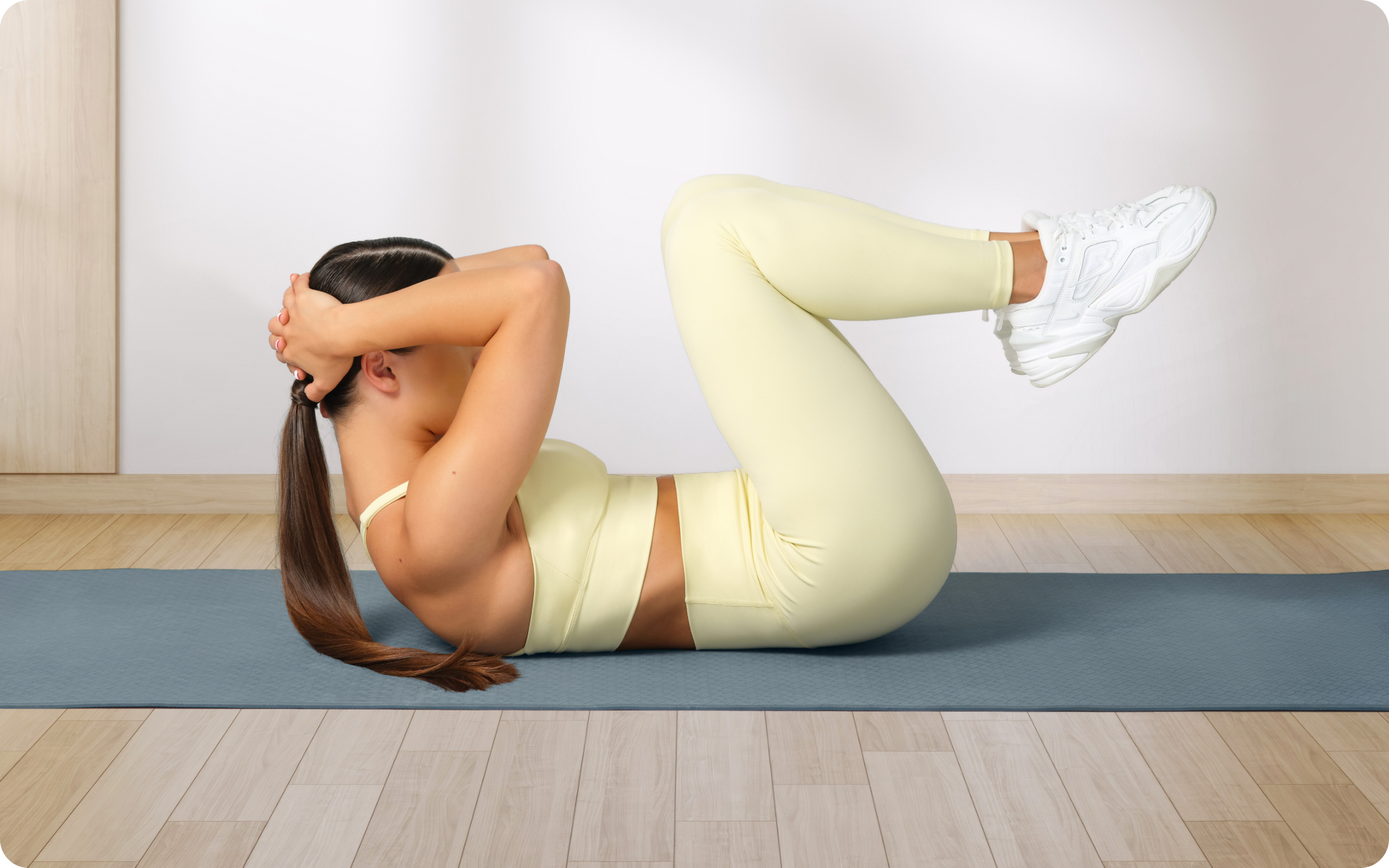Imagine a strong, stable foundation that supports your entire body, allowing you to move freely and confidently without pain. That’s the power of a well-conditioned core and lower back. These two areas are intricately connected, and when one is weak, the other can’t compensate, leading to discomfort or even debilitating lower back pain. Conversely, when your core and lower back are strong, you are able to do the activities you love with ease. In this blog post, we’ll reveal the vital relationship between core strength and lower back health, providing you with 10 effective exercises to fortify these essential muscles. We’ll also share a few helpful tips on how you can get the most out of your workouts.
Does Strengthening Your Core Help Your Lower Back?
Strengthening your core does indeed have a significant impact on your lower back health (5). The core and lower back share an intricate connection through their anatomical structures, working together to provide support, stability, and mobility for the entire body.
Let’s take a closer look at the anatomy, movements, and consequences of weakness in these crucial muscle groups.
The core is composed of multiple muscle groups, including the rectus abdominis (commonly known as the “six-pack” muscles), transverse abdominis, internal and external obliques, and the erector spinae (3).
These muscles work in harmony to stabilize the spine, pelvis, and ribcage, providing a solid base for all other movements.
The lower back, specifically the lumbar region, is supported by the erector spinae and multifidus muscles. These muscles work together with the core muscles to maintain proper spinal alignment and posture while performing various activities such as lifting, bending, and twisting (2).
When the core muscles are weak or imbalanced, they fail to provide adequate support for the spine. This places increased strain on the lower back muscles, which may lead to pain, discomfort, or even injury.
Conversely, weak lower back muscles can result in an over-reliance on the core muscles, causing them to become fatigued and unable to properly support the spine. This vicious cycle can exacerbate existing issues or create new ones.
During everyday movements like walking, bending, or lifting, the core and lower back muscles must work synergistically to maintain spinal stability and prevent injury.
For instance, when lifting a heavy object, the core muscles contract to stabilize the spine, while the lower back muscles engage to maintain proper alignment and posture. If either group of muscles is weak, the risk of injury increases.
Research has shown that individuals with chronic lower back pain often exhibit weakness or dysfunction in their core muscles (1). Strengthening these muscles through targeted exercises can alleviate pain, improve spinal stability, and reduce the likelihood of future injury (4).
That’s not all, either. Core strength has been linked to improved athletic performance, balanced body composition, better posture, and overall health (6) (7). It goes without saying that core training should be an integral part of any fitness regimen.
Read More: Maximize Your Home Workout: 5 Plank Wall Exercises For A Powerful Core
What Is The Best Exercise To Strengthen Lower Back?
The best exercise to strengthen the lower back should target key muscle groups, involve basic human movements, and provide a balance between strength and flexibility.
An effective lower back exercise should primarily target the following muscle groups:
- Erector spinae: These muscles run along the length of the spine and are responsible for extending and stabilizing the spine.
- Multifidus: These small but vital muscles support spinal stability and help control spinal movement.
- Quadratus lumborum: This deep muscle in the lower back connects the pelvis to the spine and helps with lateral flexion and stabilization.
- Rectus abdominis: Commonly known as the “six-pack” muscles, they help with spinal flexion and stabilization.
- Transverse abdominis: This deep core muscle wraps around the midsection and provides spinal stability and support.
- Internal and external obliques: These muscles assist in rotation and lateral flexion of the trunk.
Additionally, the ideal lower back exercise should incorporate one or more of these fundamental human movements:
- Hip hinge: This movement involves bending at the hips while maintaining a neutral spine, which helps activate the lower back muscles and promotes proper lifting form.
- Spinal extension: This movement requires extending the spine against resistance, which strengthens the erector spinae muscles and improves posture.
- Spinal flexion: This movement involves bending the spine forward, which works the rectus abdominis and other core muscles.
- Rotation: Rotational movements engage the oblique muscles and other stabilizing muscles in the lower back, promoting core strength and spinal stability.
A well-rounded lower back exercise should strike a balance between strength and flexibility, ensuring that the muscles are both strong and supple. This can be achieved by incorporating both static and dynamic exercises that challenge the muscles through various ranges of motion.
Finally, the best exercise for strengthening the lower back should be adaptable and allow for progression. This means that the exercise can be modified to suit different fitness levels and can be made more challenging as the individual gains strength and stability.
BetterMe app is a foolproof way to go from zero to a weight loss hero in a safe and sustainable way! What are you waiting for? Start transforming your body now!
7 Core Exercises For Lower Back Pain
Here are seven core exercises that can help alleviate lower back pain. Incorporating these exercises into your routine to help alleviate low back pain and improve overall spinal stability and strength.
Bird Dog
Targeted muscles: Erector spinae, multifidus, gluteus maximus, transverse abdominis, and rectus abdominis.
Involved movements: Spinal stabilization, hip extension, and shoulder flexion.
Steps:
- Begin on all fours with your hands under your shoulders and knees under your hips.
- Engage your core and maintain a neutral spine.
- Slowly extend your right arm forward and left leg backward, keeping both parallel to the floor.
- Hold this position for a few seconds, then return to the starting position.
- Repeat the movement with your left arm and right leg.
- Perform 8-12 repetitions on each side.
Dead Bug
Targeted muscles: Rectus abdominis, transverse abdominis, internal and external obliques.
Involved movements: Spinal stabilization, hip flexion, and shoulder flexion.
Steps:
- Lie on your back with your arms extended toward the ceiling and your knees bent at a 90-degree angle.
- Engage your core and press your lower back into the floor.
- Slowly lower your right arm and left leg toward the floor while keeping your lower back pressed down.
- Return to the starting position and repeat the movement with your left arm and right leg.
- Perform 8-12 repetitions on each side.
Plank
Targeted muscles: Rectus abdominis, transverse abdominis, erector spinae, and multifidus.
Involved movements: Spinal stabilization and isometric core contraction.
Steps:
- Begin in a push-up position with your elbows directly under your shoulders and your feet hip-width apart.
- Lower your forearms to the floor while keeping your body in a straight line from head to heels.
- Engage your core and maintain a neutral spine.
- Hold this position for 30 seconds to 1 minute.
Side Plank
Targeted muscles: Internal and external obliques, transverse abdominis, and quadratus lumborum.
Involved movements: Lateral spinal stabilization and isometric core contraction.
Steps:
- Lie on your right side with your legs extended and your right elbow under your shoulder.
- Stack your feet or place one foot in front of the other for stability.
- Engage your core and lift your hips off the floor, forming a straight line from head to feet.
- Hold this position for 30 seconds to 1 minute.
- Repeat on the left side.
Read More: Strengthening Your Core With Wall Walks: A Comprehensive Guide
Bridge
Targeted muscles: Gluteus maximus, erector spinae, and hamstrings.
Involved movements: Hip extension and spinal stabilization.
Steps:
- Lie on your back with your knees bent and feet flat on the floor, hip-width apart.
- Engage your core and press your heels into the floor.
- Lift your hips off the floor until your body forms a straight line from shoulders to knees.
- Hold this position for a few seconds, then slowly lower your hips back to the floor.
- Perform 10-15 repetitions.
Cat-Cow
Targeted muscles: Erector spinae, multifidus, rectus abdominis, and transverse abdominis.
Involved movements: Spinal flexion and extension.
Steps:
- Begin on all fours with your hands under your shoulders and knees under your hips.
- Inhale and slowly arch your back, dropping your belly toward the floor and lifting your head and tailbone (Cow pose).
- Exhale and round your spine, tucking your tailbone and bringing your chin toward your chest (Cat pose).
- Repeat this sequence 8-10 times, moving smoothly between the two poses.
Supine March
Targeted muscles: Rectus abdominis, transverse abdominis, and internal and external obliques.
Involved movements: Spinal stabilization and alternating hip flexion.
Steps:
- Lie on your back with your knees bent and feet flat on the floor, hip-width apart.
- Engage your core and press your lower back into the floor.
- Slowly lift your right foot off the floor, maintaining a 90-degree angle at your knee.
- Lower your right foot back to the floor and repeat the movement with your left foot.
- Perform 10-12 repetitions on each side.
Exercises To Strengthen Core And Lower Back For Beginners
Beginners face a unique set of challenges when they attempt to strengthen their core and lower back. They must start with the basics, performing exercises that are easy to learn. These beginner-friendly exercises can help you build foundational strength in both your core and lower back.
As your strength improves, you can progress to more advanced exercises to further enhance stability and reduce the risk of injury. Here are three basic exercises designed specifically for those just starting out:
3 Core And Lower Back Exercises For Beginners
Here are three beginner-friendly exercises that can help strengthen both the core and lower back. Each exercise includes a comprehensive description, targeted muscles, involved movements, and steps for execution.
Pelvic Tilt
Targeted muscles: Transverse abdominis, rectus abdominis, and erector spinae.
Involved movements: Spinal stabilization and pelvic movement.
Steps:
- Lie on your back with your knees bent and feet flat on the floor, hip-width apart.
- Place your hands on your hips and engage your core.
- Gently tilt your pelvis upward, pressing your lower back into the floor.
- Hold this position for a few seconds, then slowly release and return to the starting position.
- Perform 10-15 repetitions.
Intense sweat sessions, working weight loss tips, lip-smacking recipes come in one package with the BetterMe app. And all of it is at your fingertips, start transforming your life now!
Cat-Cow Stretch
Targeted muscles: Erector spinae, multifidus, rectus abdominis, and transverse abdominis.
Involved movements: Spinal flexion and extension.
Steps:
- Begin on all fours with your hands under your shoulders and knees under your hips.
- Inhale and slowly arch your back, dropping your belly toward the floor and lifting your head and tailbone (Cow pose).
- Exhale and round your spine, tucking your tailbone and bringing your chin toward your chest (Cat pose).
- Repeat this sequence 8-10 times, moving smoothly between the two poses.
Glute Bridge
Targeted muscles: Gluteus maximus, erector spinae, and hamstrings.
Involved movements: Hip extension and spinal stabilization.
Steps:
- Lie on your back with your knees bent and feet flat on the floor, hip-width apart.
- Engage your core and press your heels into the floor.
- Lift your hips off the floor until your body forms a straight line from shoulders to knees.
- Hold this position for a few seconds, then slowly lower your hips back to the floor.
- Perform 10-15 repetitions.
How To Strengthen Core Without Hurting Lower Back?
To strengthen your core without hurting your lower back, you must approach your exercise routine with care and attention.
First off, you have to be aware of the following safety concerns:
- Existing injuries or pain: If you have existing lower back injuries or pain, consult with a healthcare professional before starting any new exercise program.
- Proper form: Incorrect form during exercises can exacerbate lower back issues or create new problems. Always prioritize proper technique over the number of repetitions or resistance level.
- Balanced approach: Focus on all aspects of core strength, including the deep stabilizing muscles, to ensure a well-rounded approach that doesn’t place undue strain on the lower back.
To gauge whether your lower back is strong enough for more advanced core exercises, consider the following factors:
- Pain-free movement: You should be able to perform basic daily movements, such as bending, lifting, and twisting, without experiencing pain or discomfort in your lower back.
- Core stability: If you can maintain a neutral spine and engage your core during various exercises, this indicates that your lower back is strong enough to handle more advanced core work.
- Exercise progression: Begin with low-intensity core exercises and gradually progress to more challenging movements. If you can perform these exercises without pain or difficulty, it’s a good indication that your lower back is strong enough.
If your lower back isn’t strong enough yet, follow these steps to build strength and stability:
- Start with gentle exercises: Begin with gentle and low-impact exercises, such as pelvic tilts, cat-cow stretches, and partial curl-ups, to build basic lower back and core strength.
- Progress gradually: As your strength improves, gradually progress to more advanced exercises, like planks, bridges, and bird dogs. Always listen to your body and avoid pushing through pain.
- Incorporate flexibility training: Include stretching and mobility exercises for the lower back, hips, and hamstrings to improve flexibility and reduce strain on the lower back.
Finally, keep these tips in mind to strengthen your core without hurting your lower back:
- Warm-up properly: Always warm up before exercising to increase blood flow to the muscles and prepare them for the workout (8).
- Breathe correctly: Focus on proper breathing technique during core exercises, as holding your breath can increase pressure on the spine and lower back.
- Modify exercises as needed: If an exercise causes pain or discomfort in your lower back, modify it or choose a different exercise that targets the same muscle group without causing pain.
- Rest and recover: Give your muscles time to recover by allowing at least one day of rest between core workouts.
By following these guidelines and prioritizing safety, you can effectively strengthen your core without hurting your lower back, leading to improved overall health and reduced risk of injury.
Conclusion
Incorporating exercises that target both the lower back and core muscles is essential for building a strong, stable foundation that supports your entire body.
By focusing on key muscle groups, basic human movements, and maintaining a balance between strength and flexibility, you can effectively alleviate low back pain and prevent potential injuries.
Remember to prioritize proper form, progress gradually, and consult with a healthcare professional before starting any new exercise program.
DISCLAIMER:
This article is intended for general informational purposes only and does not serve to address individual circumstances. It is not a substitute for professional advice or help and should not be relied on for making any kind of decision-making. Any action taken as a direct or indirect result of the information in this article is entirely at your own risk and is your sole responsibility.
BetterMe, its content staff, and its medical advisors accept no responsibility for inaccuracies, errors, misstatements, inconsistencies, or omissions and specifically disclaim any liability, loss or risk, personal, professional or otherwise, which may be incurred as a consequence, directly or indirectly, of the use and/or application of any content.
You should always seek the advice of your physician or other qualified health provider with any questions you may have regarding a medical condition or your specific situation. Never disregard professional medical advice or delay seeking it because of BetterMe content. If you suspect or think you may have a medical emergency, call your doctor.
SOURCES:
- Abdominal trunk muscle weakness and its association with chronic low back pain and risk of falling in older women (2019, biomedcentral.com)
- Anatomy, Back, Muscles (2022, ncbi.nlm.nih.gov)
- Core Stability Exercise Principles (2008, journals.lww.com)
- Core Stability Training for Injury Prevention (2013, ncbi.nlm.nih.gov)
- Core strength training for patients with chronic low back pain (2015, ncbi.nlm.nih.gov)
- Effect of Core Balance Training on Muscle Tone and Balance Ability in Adult Men and Women (2022, mdpi.com)
- Optimizing performance by improving core stability and core strength (2008, pubmed.ncbi.nlm.nih.gov)
- Warming-up and stretching for improved physical performance and prevention of sports-related injuries (1985, pubmed.ncbi.nlm.nih.gov)













